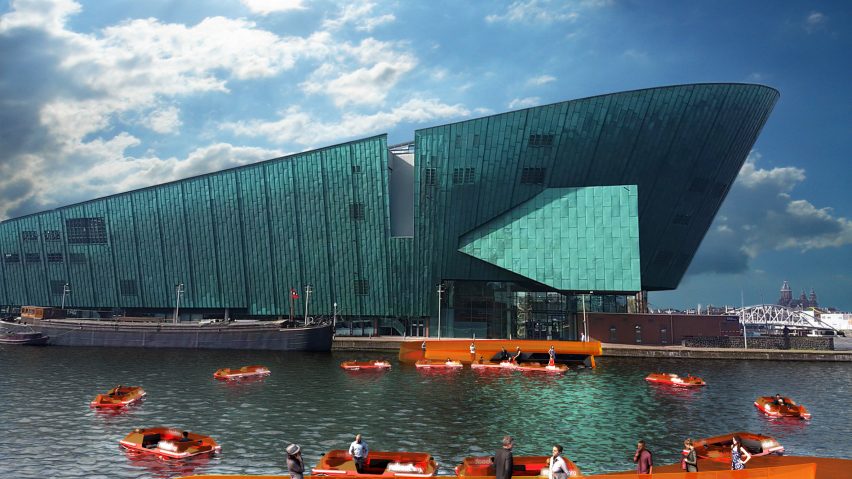Carlo Ratti and his team at MIT's Senseable City Lab have come up with a "bridge" made of continuously circling autonomous boats for a tricky patch of Amsterdam's waterway.
The robot boats, appropriately known as Roboats, use cameras, lidar – a detection system that uses laser –and algorithms to operate without human drivers.
They communicate with each other to calculate the best path around obstacles.
They are a project from the Senseable City Lab, which works at the intersection of technology and urbanism, and the Amsterdam Institute for Advanced Metropolitan Solutions (AMS Institute).
The groups designed the Roboats to operate in fleets, and the roundAround "bridge" will be one of the first applications of the technology.
The boats will bridge the waterway between Amsterdam's city centre and the new development of Marineterrein Amsterdam — an area currently not suited to permanent infrastructure as it's a through-route for larger boats.
The canal is just 60 metres wide, but without a bridge, it currently takes 10 minutes to walk the almost one kilometre from one side to the other.
RoundAround offers a dynamic, low-commitment alternative. Its boats will move in a continuous circle across the canal, stopping and rerouting when they detect an obstacle in real time.
"Bridging this waterway truly challenges urban engineers, as it's an important fixed mast route for bigger boats," said AMS Institute head of research Stephan van Dijk. "This makes it challenging to design an accessible bridge across this canal."
"With Roboat as a dynamic infrastructure we can potentially connect the two areas and use roundAround as a living lab to develop on-site experience on how autonomous boats behave on the Amsterdam canals," he continued.
The Roboats are electric, and use their brief sojourns at the platforms on either side of the canal to recharge.
Each boat has room for up to six people and will also contain a larger touch-screen so the passengers can monitor the status of their journey or call for assistance if required.
The Senseable City Lab and AMS Institute say the roundAround will transport hundreds of people per hour. They see it as a form of temporary "dynamic infrastructure" to suit a developing city.
The designers also see a future for the boats in garbage collection or cargo transport — activities that could ease road congestion by better utilising Amsterdam's canals. Other cities where Roboats could be useful are Venice or Bangkok, they suggest.
In keeping with the open-ended nature of the project, the Roboats are modular, expandable and multifunctional in their design. They are able to move in eight directions for precise manoeuvrability.
Ratti said the roundAround project would be a crucial stage in the longer term development of Roboats.
"The Roboat units of roundAround will autonomously respond to and learn from the dynamics of this Amsterdam waterway," said Ratti. "As they operate, the system will become increasingly more intelligent and well-equipped to be implemented in other parts of the city and other cities worldwide."
Other innovations from the Senseable City Lab include a sewage-sampling robot designed to predict disease outbreaks and the bartending robot Makr Shakr, now its own company.

